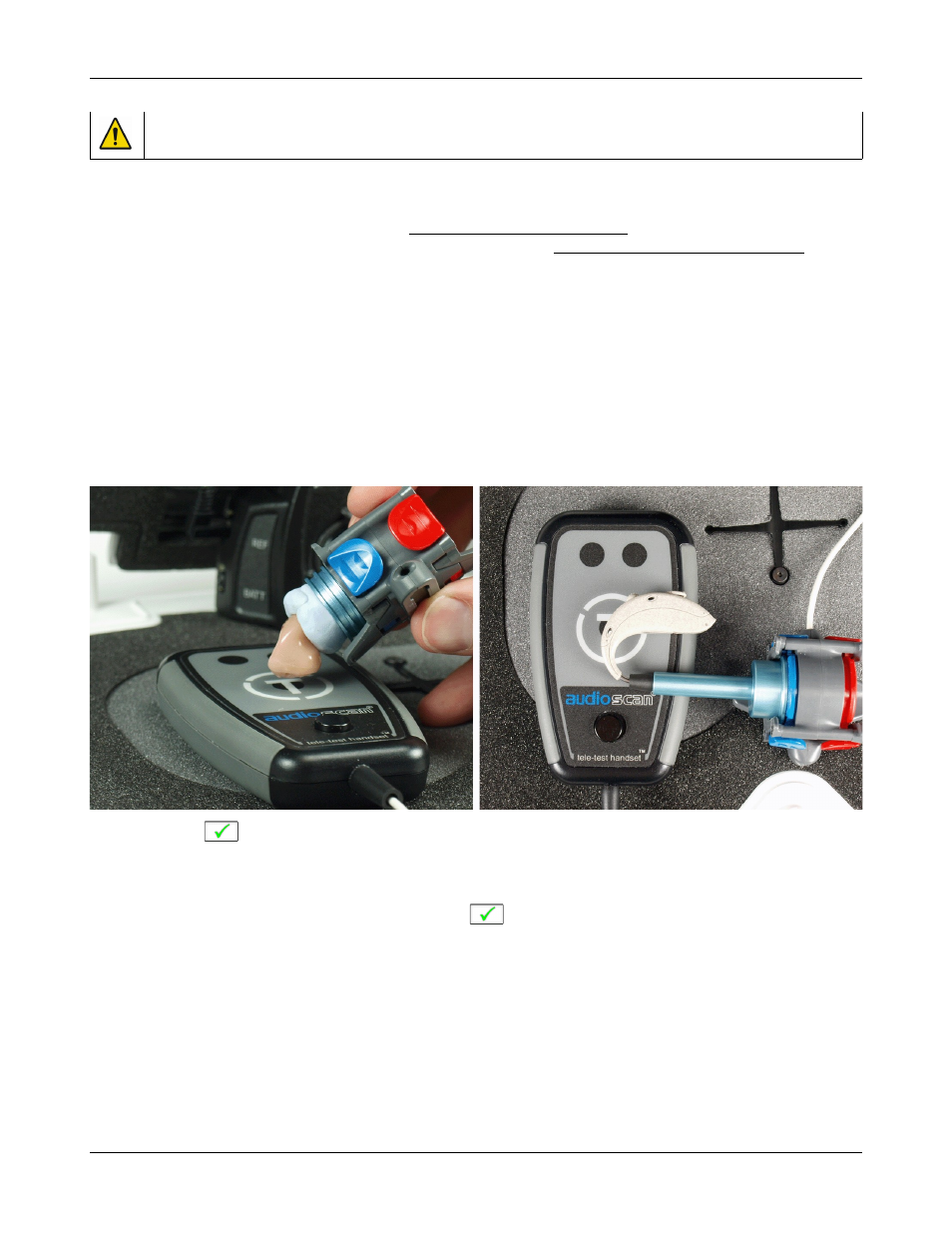Ansi test loop test – Audioscan Verifit 2 User Manual
Page 104

Verifit
®
User's Guide Version 4.2 © June 2015
WARNING: Keep magnet out of reach of children and pets. If a magnet is swallowed seek immediate medical
attention.
ANSI S3.22 requires that the gain control be set to RTS before running this test. The reference test gain (RTG)
is required in order to calculate the or RSETS. The easiest way to meet both requirements is to run a [Linear] or
[AGC] test before running this test. See ANSI 2003 Linear and AGC tests. The tele-test handset comes with a
small magnet attached that may affect implantable devices. See How to Avoid Undesirable Side Effects.
1. First, complete an ANSI [Linear] or [AGC] test,
2. Click the right mouse button to raise the home menu, then select [Telecoil].
3. Set the aid to "T" (telecoil input).
4. Click [Start TMFS test]. Test setup instructions are displayed.
5. Position the aid on the 'T' on the tele-test handset. BTE aids should lie as flat as possible on the tele-test
surface, while custom aids should be oriented with their faceplate parallel to the top surface (if possible) and
touching it as shown.
6. Press
to start the test.
7. While maintaining the orientation of step 5, move the hearing instrument around on the tele-test handset
surface to maximize the number shown in the [Maximize Average-SPLITS Value] box.
8. Without moving the hearing instrument, press
to store the Average (HFA-or SPA) SPLITS value and
run the SPLITS curve.
If an RTG has been previously obtained, the RSETS will be shown.
ANSI test loop test
ANSI S3.22 requires that the gain control be set to RTS before running this test. The reference test gain (RTG)
is required in order to calculate the RTLS. The easiest way to meet both requirements is to run a [Linear] or
[AGC] test before running this test. See ANSI 2003 Linear and AGC tests
104